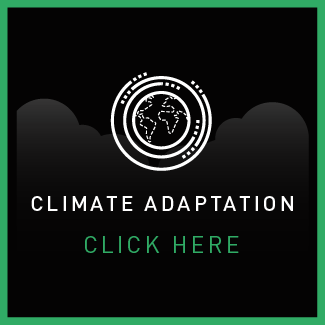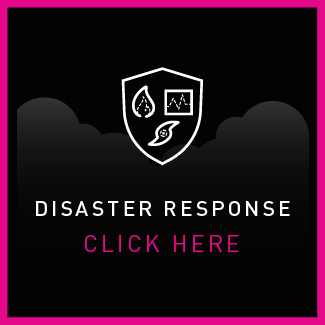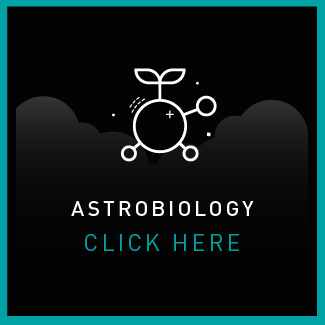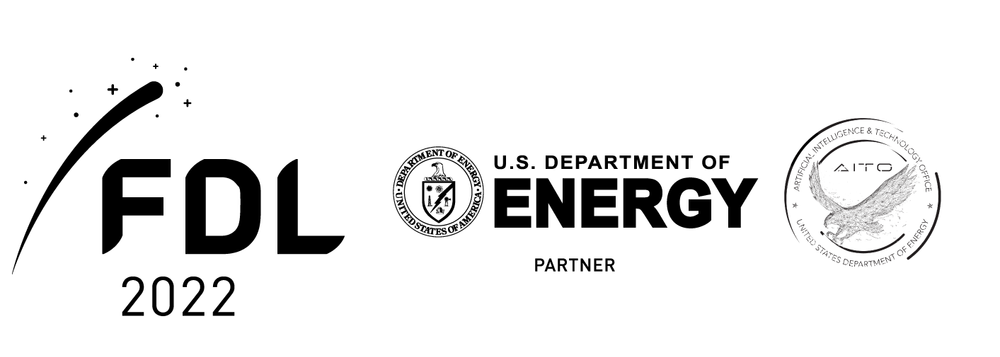RESEARCH
FDL 2022
This year we tackled challenges in the areas of: Energy Futures, Earth Science, Disaster Response, Climate Adaptation, Astrobiology, Lunar Exploration and Heliophysics.
FDL.AI’s ability to attract the best researchers from around the world is part of its success formula - but not all. Over the years, we’ve evolved numerous process innovations that allow FDL.AI research teams to consistently deliver world-class outcomes for our Federal stakeholders at NASA, DOE, and USGS over a very accelerated time-scale.
Challenges Videos
Navigate to research areas
Climate Adaptation Digital Twin: Environmental Remediation
Can we use AI to emulate Amanzi-ATS simulations to deliver rapid and accurate results to practitioners and enable decision-making on future climate scenarios without a supercomputer?
-
-
Physics-informed surrogate modeling for supporting climate resilience at groundwater contamination sites.
Through an unsupervised deep learning approach to reduce the dimensionality of the vast historical and projected climate data, the achieved model reduces the computational burden of flow and transport simulations.
Authors:Lijing Wang, Takuya Kurihana, Aurelien Meray, Ilijana Mastilovic, Satyarth Praveen, Zexuan Xu, Milad Memarzadeh, Alexander Lavin, Haruko Wainwright -
Neurips 2022 ML4PS - Multi-scale Digital Twin: Developing a fast and physics-informed surrogate model for groundwater contamination with uncertain climate models
Authors: Lijing Wang, Takuya Kurihana, Aurelien Meray, Ilijana Mastilovic, Satyarth Praveen, Zexuan Xu, Milad Memarzadeh, Alexander Lavin, Haruko WainwrightAGU 2022 - Physics-informed surrogate modeling for supporting climate resilience at groundwater contamination sites
Authors: Lijing Wang, Takuya Kurihana, Aurelien Meray, Ilijana Mastilovic, Satyarth Praveen, Zexuan Xu, Milad Memarzadeh, Alexander Lavin, Haruko Wainwright -
Multi-scale Digital Twin: Developing a fast and physics-informed surrogate model for groundwater contamination with uncertain climate models - DOI
Authors: Lijing Wang, Takuya Kurihana, Aurelien Meray, Ilijana Mastilovic, Satyarth Praveen, Zexuan Xu, Milad Memarzadeh, Alexander Lavin, Haruko Wainwright
Climate Adaptation: Geomechanics for CO2 Sequestration
Can physics-informed machine learning models be applied to geomechanical and geophysical datasets to advance innovations in forecasting induced seismicity rates in potential CO2 sequestration sites?
-
-
Seismic Analysis for Induced Forecasts.
Utilizing numerical computing best practices, efficient optimizers, and dimensionality reduction strategies, this challenge successfully reduced model train time from 22 hours to 3 minutes, enabling near real-time forecasts.
Authors: Giuseppe Castiglione, Alexandre Chen, Akshay Suresh, Han Xiao, Kayla Kroll, Christopher Sherman, Constantin Weisser.
Climate Adaptation: Fortifying the Grid
Can AI/ML improve the detection of radioactive materials in urban environments, improving sensitivity, accuracy and response time, enhancing national security, environmental remediation and public safety?
-
-
Developing a Disaster-Ready Power Grid Agent Through Geophysically-Informed Fault Event Scenarios.
In this study, researchers used weather-driven hazards (hurricanes and wildfires) to train a reinforcement learning agent and incorporated contextual information to advise grid operators on the impact of their control decisions beyond what they can normally process under time sensitive constraints.
Authors: Julian B. Arnheim, Hashmath Fathima, Trier Mortlock, Pat Pataranutaporn, Nadia Ahmed, Ahmad Tbaileh, Tarannom Parhizkar.
Disaster Response: Urban Rad Hunter
Can AI/ML improve the detection of radioactive materials in urban environments, improving sensitivity, accuracy and response time, enhancing national security, environmental remediation and public safety?
-
-
A machine learning approach to detect and identify radioactive sources in urban environments.
ML can enhance traditional methods, by improving the speed and accuracy of detection and identification of radioactive material in urban environments, while using the same existing scintillation detectors.
Authors: Robert Alvarez, Burcin Bozkaya, James Ghawaly, Thomas Grimes, Joseph Ko, JoséMarchezi, Lindsay Rutter, Peter Taiwo, Greg Thoreson
Disaster Response Wildfire: Multispectral Estimation of Fuel Loads
Can we use ML-enhanced tools to prevent fires from starting, or new fires from combining to create mega-fires?
-
-
This work developed an unsupervised model for feature extraction in wildfire scenarios using a contrastive learning framework, The Fire Contrastive Learning (FireCLR).
-
-
Unsupervised Wildfire Change Detection based on Contrastive Learning - DOI
Authors - Beichen Zhang, Huiqi Wang, Amani Alabri, Karol Bot, Cole McCall, Dale Hamilton, Vít Růžička
Energy Futures: The H2 Discovery Engine
Can we use AI tools such as NLP to harvest and explore both historical and emerging research and determine candidate processes that might scale-up to useful levels? Can AI help us discover new ideas and perhaps rank the most promising?
-
-
Solving climate change one atom of hydrogen at a time.
In this work the team developed the H2 Golden Retriever (H2GR) system for H2 knowledge discovery and representation accessible via an interface tailored for improved decision-making. The tool utilizes a combination of NLP & KG to organize information and recommend promising papers.
Authors: Paul Seurin, Joseph Wiggins,Olusola Olabanjo, Rozhin Yasei, Lorien Pratt, Loveneesh Rana, Gregory Renard
Energy Futures: Concentrated Solar Power Controller Optimization
Can we teach AI the relationships within a given CSP control scheme (how CO2 flow, temperature and pressure varies with changes in ambient temp and load demand), to optimize electricity production?
-
-
Solair: Engineering today’s problem for tomorrow’s solution.
This challenge created an in-house simulator which based on input parameters, including inlet and outlet air and sCO₂ temperatures and pressures, ambient conditions and mass flow rates of the system, ensures that a specific design obeys physical laws and determines thermophysical performance.
Authors: Shawn Hatcher, Andrea Scorsoglio, Bernd Sturdza, Dolores Garcia, Ouail Kitouni, Matt Kusner, Javad Khalesi,Christain Schroeder de Witt, Alexander Lavin.
HELIOPHYSICS: 4Π EUV IRRADIANCE: THE SUN AS A (FULLY-RESOLVED) STAR
Can ML be used to intercalibrate multi-viewpoint observations of our star?
-
-
SPI3S: Spectral Irradiance of a 3D Sun.
Researchers trained a Neural Radiance Field (NeRF) model to reconstruct a 3-dimensional representation of the Sun using the multi-satellite input data.
Authors: Kyriaki-Margarita Bintsi, Robert Jarolim, Miraflor Santos, Benoit Tremblay, Anna Jungbluth, James Mason,Andrés Muñoz-Jaramillo,Sairam Sundaresan, Angelos Vourlidas. -
-
SuNeRF: Validation of a 3D Global Reconstruction of the Solar Corona Using Simulated EUV Images - DOI
Authors: Kyriaki-Margarita Bintsi, Robert Jarolim, Benoit Tremblay, Miraflor Santos, Anna Jungbluth, James Paul Mason, Sairam Sundaresan, Angelos Vourlidas, Cooper Downs, Ronald M. Caplan, Andrés Muñoz Jaramillo
HELIOPHYSICS: Seismic Insight Within Geomagnetic and Ionospheric Data
Can we use ML to distinguish space-weather related perturbations in geomagnetic and ionospheric data from those related to seismic or pre-earthquake signals?
-
-
Seismic InSight within Geomagnetic and Ionospheric Data
An open source pipeline was developed to consolidate and align global datasets, enabling the use of state-of-the-art deep learning algorithms.
Authors: Luke Cullen, Asadullah Hill Galib, Andrew William Smith, Debvrat Varshney, Edward Brown, Peter J Chi, Xiangning Chu, Filip Svoboda. -
Neurips 2022 - Statistical Analysis Of Earthquake Precursor Signals In Ionospheric And Geomagnetic Data
Neurips 2022 - Indirect Seismic Activity Identification Through Ionospheric Modelling
Neurips 2022 - Can We Forecast And Detect Earthquakes From Heterogeneous Multivariate Time Series Data?
AGU 2022 - Multimodal Machine Learning for Earthquake Identification and Forecasting
Earth Science: Self Supervised Learning on SAR Data for Change Detection
Can we understand how ML SSL methods should be adapted to SAR data and how to devise SSL pretraining tasks that effectively exploit the particularities of SAR for earth science?
-
-
Towards automated landslide detection for disaster assessment after Hurricanes or Earthquakes.
This challenge demonstrates how SSL methods can enhance SAR potential in scenarios such as rapid response for emergencies, so as to leverage the expected wealth of forthcoming SAR data with current and future satellite missions.
Authors: Ragini Bal Mahesh, Ioannis Prapas, Wei Ji Leong, Vanessa Boehm, Raul Ramos-Pollan, Edoardo Nemni, Freddie Kalaitzis, Siddha Ganju. -
AGU 2022 - DeepSlide: Self-supervised learning on SAR data for change detection
Neurips 2022 - SAR-based landslide classification pretraining leads to better segmentation
Neurips 2022 - Deep Learning for Rapid Landslide Detection using Synthetic Aperture Radar (SAR) Datacubes
Neurips 2022 - Deep learning based landslide density estimation on SAR data for rapid response
-
Gitlab - DeepSlide
Earth Science: SMD Knowledge Graph Discovery
Can we use NLP to develop more effective discoveries by embedding modern language models with the “scientific expertise” to suggest potentially useful connections for researchers?
-
-
Using NLP to fast-track scientific discovery
In this challenge, researchers propose new steps towards the vision of a discovery engine for science, such as a derivative of the Bidirectional Encoder Representations (BERT) and techniques such as topic clustering and classification of the scientific texts to explore cross-domain opportunities.
Authors: Anamaria Berea, Kaylin Bugbee, Emily Foshee, Fech Scen Khoo, Megan Mark, Gregory Renard, Marcella Scoczynski, Roelien Timmer. -
AGU 2022 - A Knowledge Graph Connecting Multiple NASA Science Mission Directorate Domains
Authors: Anamaria Berea, Kaylin Bugbee, Emily Foshee, Fech Scen Khoo, Megan Mark, Gregory Renard, Marcella Scoczynski, Roelien Timmer. -
NASA Science Mission Directorate Knowledge Graph Discovery - DOI
Authors: Roelien C. Timmer, Fech Scen Khoo, Megan Mark, Marcella Scoczynski Ribeiro Martins, Anamaria Berea, Gregory Renard, Kaylin Bugbee.






























































